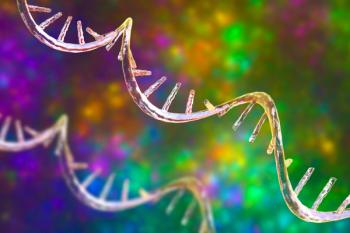
Capacity Planning Challenges Even Genentech
Even the best biotech companies lack a crystal ball. In 2003, Genentech had a shortage of manufacturing capacity. So they started an internal campaign, called "Every Gram Counts," to produce as much as possible.
Even the best biotech companies lack a crystal ball.
In 2003, Genentech had a shortage of manufacturing capacity. So they started an internal campaign, called “Every Gram Counts,” to produce as much as possible.
“The process development and manufacturing teams really responded,” said Patrick Yang, PhD, executive vice president of product operations at Genentech, describing the effort during his keynote address at the Bio Manufacturing Summit in San Diego on January 27. “They went flat out.”
The results were impressive. Average yields jumped roughly four times, from 1–1.5 grams per liter in 2003 to 4–5 g/L today, and are still increasing.
The company couldn’t predict how successful its yield efforts would be, however, so they started building more capacity at the same time, to ensure they were ready as new products were approved for commercialization. So that same year, 2003, when Genentech began expanding its site in Vacaville, CA, they thought big. They installed eight 25,000-L fermenters, for a total increase of 200,000 L of new cell culture capacity. The result is excess capacity today.
Experience in inaccurately predicting capacity needs, unfortunately, is not something easily applied to the future. As Yang pointed out, manufacturing decisions have to be made during Phase 2, only three years before commercialization, but it takes about five to six years to build a new plant on a greenfield location.
“A six-month delay in having capacity ready for a product can mean a loss of $1 billion a year, whereas having too much capacity costs about $50 to $150 million a year,” he said. “So the natural tendency is to build more.”
Other lessons, however, can be applied to future projects, and Yang cited both mistakes and successes from recent engineering efforts.
Late-stage installation of seismic base isolators, which allow the new building in Vacaville to move on its foundation during earthquakes without collapsing, were first estimated to add $10 million to the project cost. When it turned out that the isolators, originally planned for a crawl space, had to be installed in a full height basement at the request of the municipal inspector, the added cost ballooned to $25 million.
Another error and lesson learned occurred in planning for the plant’s purified water needs. They replicated a functional design of an existing water purification system, and transported the purified water through PVC piping. The long piping became contaminated, however, and because the interior surface was not smooth, they were unable to eliminate trace levels of contamination. So they ended up re-doing it with stainless steel.
“The risk assessments of any engineering project need to be done with rigor,” said Yang.
He also cited positive learnings. One was their modular approach to construction, used at the company’s new buildings in Vacaville and Tuas, Singapore. For the Singapore facility, 24 modules were constructed off site, in a controlled indoor environment that allowed them to ensure quality and avoid weather- and site-related delays.
“This approach saved us about six months,” said Yang.
He also said he was extremely proud of the hard work and technical competence of his team, which he said “trump everything else.”
Newsletter
Stay at the forefront of biopharmaceutical innovation—subscribe to BioPharm International for expert insights on drug development, manufacturing, compliance, and more.




